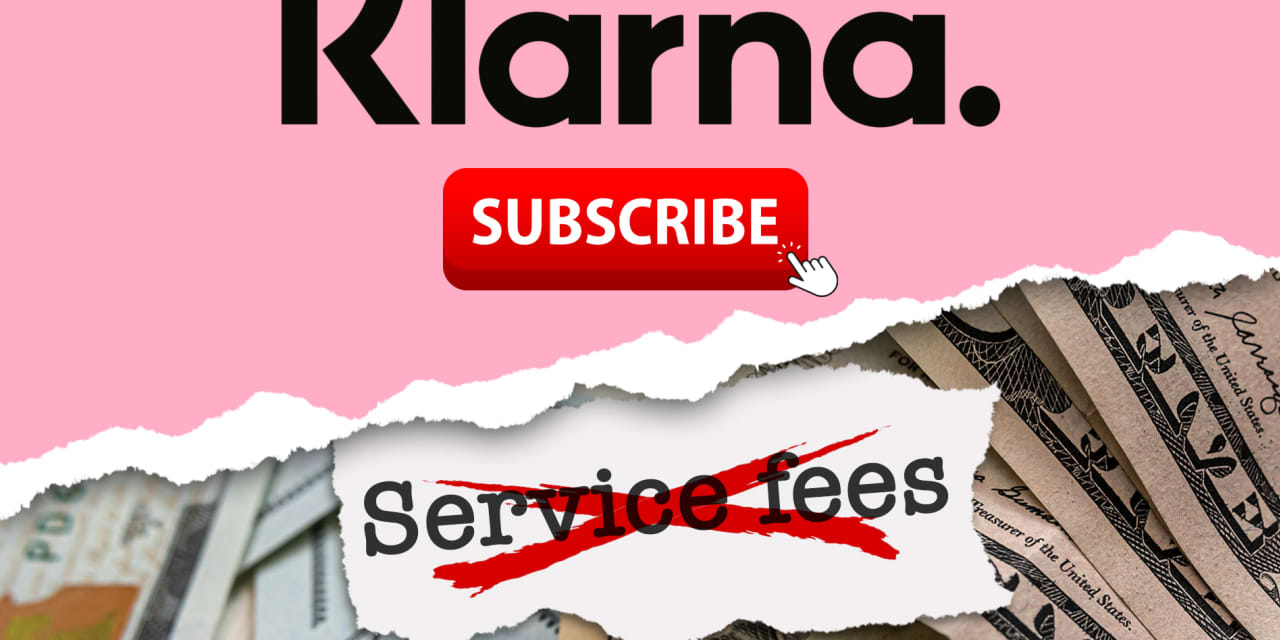Klarna, a major buy-now, pay-later provider, is offering a new monthly subscription for its customers for $7.99. The biggest attraction? It eliminates service fees.
“The main proposition of Klarna Plus right now is that you don’t pay any service fees,” Klarna Chief Marketing Officer David Sandstrom said in a statement. “So if you love Klarna and if you love shopping at Target and Walmart, it makes a ton of sense financially.”
Designed for people who use Klarna regularly, the subscription also comes with two other benefits that aren’t available to non-subscribers: It doubles rewards points on purchases and it provides discounts of up to $30 on purchases with certain partner brands.
The service fees that Klarna is referring to are charged when customers use Klarna’s “One Time Card” to buy something at a retailer that doesn’t offer Klarna payment. Using the “One Time Card” allows customers to divide their purchases into four installments; they pay the service fee with the first installment.
The fee is $1 for orders under $100, and $2 for orders over $100, a Klarna spokesperson told MarketWatch in an email. Klarna users don’t pay the service fee when they use Klarna’s most popular “Pay in 4” product, which allows customers to split up their purchases into four interest-free payments to be paid every two weeks. However, Klarna will also charge a service fee when users create a gift card to pay at certain merchants.
With the subscription to Klarna Plus, the company estimates that those who make at least six “One Time Card” purchases each month can save around $12 a month, the spokesperson said.
Consumer advocates have said that although buy-now, pay-later products are marketed as having no fees and no interest, some products do include such charges. And it can be hard for consumers to know what they are getting into.
See also: Can I still get Netflix with T-Mobile? Does Verizon still come with Disney+? Subscription deals, explained.
Most BNPL providers don’t charge interest, but some charge late-payment fees and other types of fees. Klarna charges up to $7 for a late fee if the payment is overdue more than 10 days. It also offers longer-term loans up to 36 months that charge interest.
The yearly cost of the Klarna Plus subscription comes to more than $90, making it similar to annual fees on some credit cards, said Adam Rust, director of financial services at the Consumer Federation of America. But consumers using Klarna or any BNPL service don’t enjoy the same kind of protections as they do when using a credit card, he added. For example, credit-card companies are not allowed to advertise their services to people who are under 21 years old.
A 2009 law known as the Credit Card Act put a cap on interest-rate changes and fees, but it does not apply to BNPL companies, for now. Klarna users do enjoy some purchase protections, similar to credit cards, such as getting refunds for goods not received.
Against this backdrop, the Consumer Financial Protection Bureau has said it’s looking into extending existing credit-card regulations to BNPL companies.
“It’s really important for consumers to understand that this is still a form of credit,” Rust told MarketWatch. “Because it’s so new, it evades a lot of protections.”
The annual percentage rate for Klarna varies by financing options, but does not top 21.90%, which is in line with the 21.47% average APR for credit-card accounts in the fourth quarter of 2023, according to LendingTree data. Americans typically use BNPL services to purchase apparel, electronics and home goods, but they also use the payment service for essentials including groceries.
The debut of Klarna’s subscription comes as the company is attempting to create new revenue streams ahead of its planned initial public offering this year.
“So that’s something that benefits Klarna, but it’s not clear if there’s a benefit for consumers,” Rust said.
Check out On Watch by MarketWatch, a weekly podcast about the financial news we’re all watching — and how that’s affecting the economy and your wallet. MarketWatch’s Jeremy Owens trains his eye on what’s driving markets and offers insights that will help you make more informed money decisions. Subscribe on Spotify and Apple.
Read the full article here





